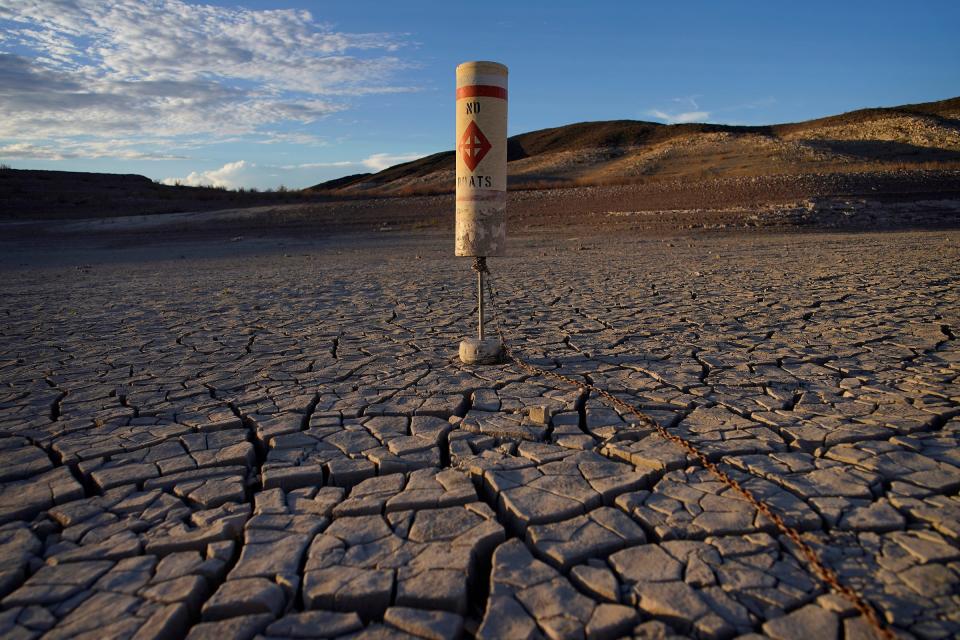No more Band-Aids: How to make the Colorado River sustainable for the long term
The Colorado River Basin is in the midst of a sustainability crisis.
Climate change and severe drought, coupled with historic overallocation of the river, have caused water users to rapidly drain the system’s major reservoirs to their lowest levels since construction.
Prior water management actions, such as urban water conservation, infrastructure efficiency investments, and water delivery reductions, have bought Colorado River water users time. But that time is now running out. Some water users are already experiencing dire effects of this crisis, while others prepare for cuts looming on the horizon.
Colorado River Basin policymakers stand at a critical juncture. They have an opportunity to avert more severe impacts of the crisis by implementing policy and management changes that go beyond the relatively incremental steps taken thus far.
How do we find long-term sustainability?
However, negotiating such major changes is extremely challenging, especially given the basin’s complex legal structure of water rights, its users’ diverse demands and uncertainty around how much water will be available in the future.
This raises the question: How can basin policymakers create transformational change that advances the long-term sustainability of the Colorado River amid this crisis?
What lurks in Lake Mead?Bodies and boats surface as water levels decline
Drawing on our experience studying water management transitions through the lenses of water resource engineering and collaborative policymaking, we offer three substantive and procedural suggestions that can help Colorado River Basin policymakers realize transformational change.
1. Move away from a fixed quantity of water

First, policymakers must stabilize the Colorado River system, meaning that water use does not exceed water availability. However, because streamflow is expected to continue to decline as temperatures rise, any stabilization solution must be adaptable to changes in water availability as they occur.
One way to achieve this is to change the indicators of system-wide water availability that trigger water management actions. Basin managers currently use slow-responding reservoir levels (which may also be muddled by complex water accounting) for this purpose. A more responsive indicator, such as a 5-year rolling average of inflow, could be used in the short term to minimize reliance on dwindling storage.
In the longer term, Basin managers could also consider an adaptive approach used in other areas of the West that converts fixed-quantity water rights to shares of the total quantity of available water, with the allocation of shares tailored to account for the existing water rights priority structure. The total quantity of available water could be adjusted to slowly refill reservoirs, serving to mitigate large water cuts in dry years. This additional step would help the system move beyond stabilization and into longer-term recovery.
2. Prioritize ideas to reduce uncertainty
Moving to the type of management regime described above will likely mean painful cuts for water users throughout the Colorado River Basin in the coming years. However, it could create more predictability and reliability in the long term – values that Basin managers have previously signaled agreement around.
Managing for a smaller known quantity of water is often easier than managing for the unknown. Achieving this, however, requires that all water users, including historically marginalized tribes and environmental groups, have an equitable seat at the negotiating table in order to reduce uncertainty about future water uses and needs.
3. Think beyond 'how to share water cuts'
Finally, policymakers must expand their conception of “water sustainability” in the Colorado River Basin. For thriving communities and economies, water is a means, not an end. Beyond water use directly for human, public and ecological health, water enables food production and energy generation.
Broadening our thinking from “how to share water reductions” to “how to maintain regional food and energy security” opens new opportunities for negotiation and collaboration beyond the traditional “zero-sum” mentality.
These could include investing recently allocated federal funds for drought mitigation in improving agricultural water use efficiency, supporting the clean energy transition and conserving ecosystems to achieve more holistic sustainability goals, rather than temporarily buying more time through short-term conservation measures.
Transforming Colorado River Basin management to mitigate the current water crisis and realize long-term water sustainability requires changing not only policies but also the way we think about water use and needs.
The three suggestions presented above can help policymakers to meet this moment of historic challenge and historic opportunity by moving beyond incremental change and fostering a new era of solutions for the Colorado River.
Margaret Garcia, Ph.D, is an assistant professor in the School of Sustainable Engineering and the Built Environment at Arizona State University. Elizabeth A. Koebele, Ph.D., is an associate professor of political science at the University of Nevada, Reno, where she researches the use and implications of collaborative approaches to governing water resources. Reach them at m.garcia@asu.edu and ekoebele@unr.edu.
This article originally appeared on Arizona Republic: How to make the Colorado River sustainable for the long term

